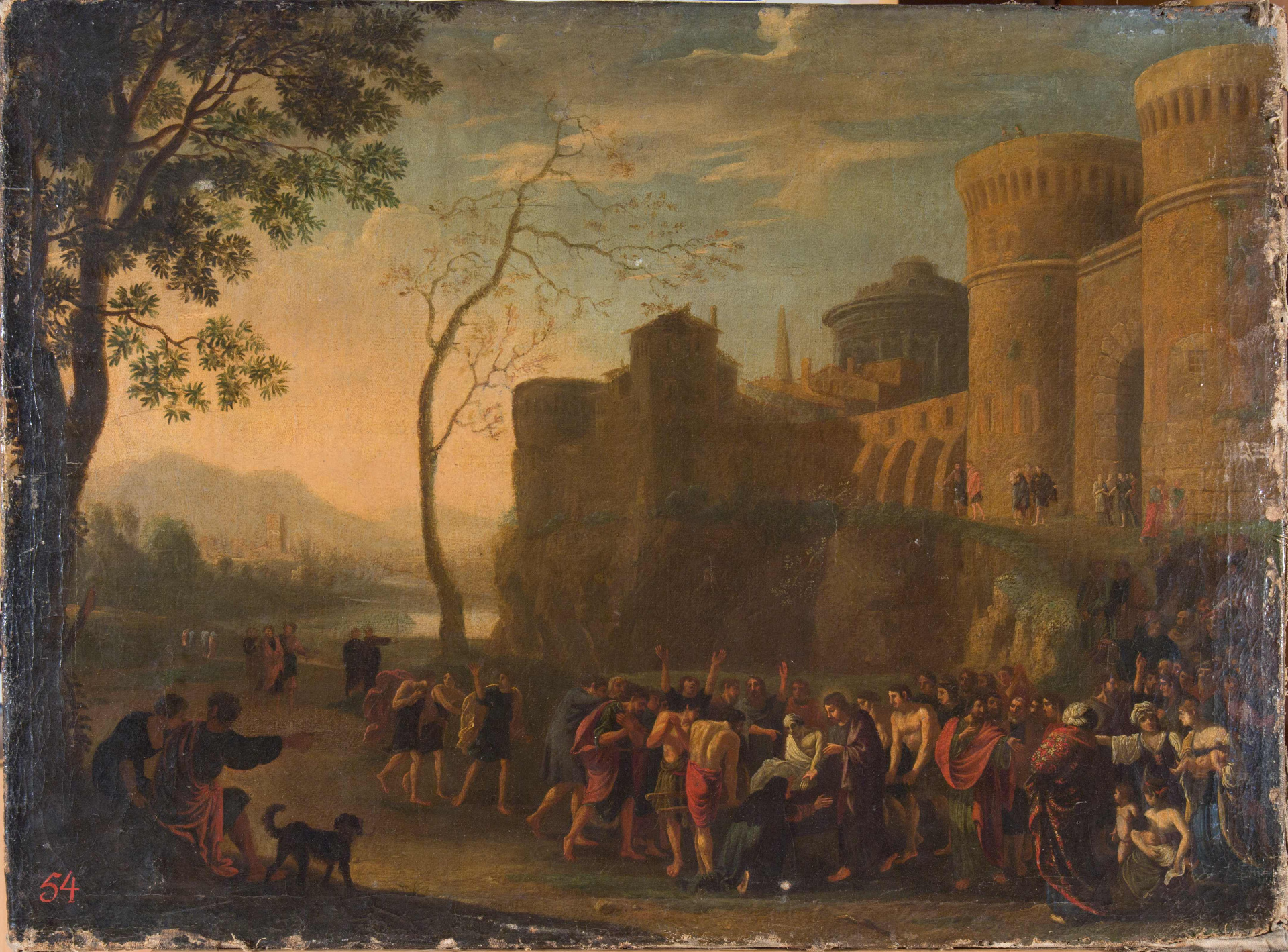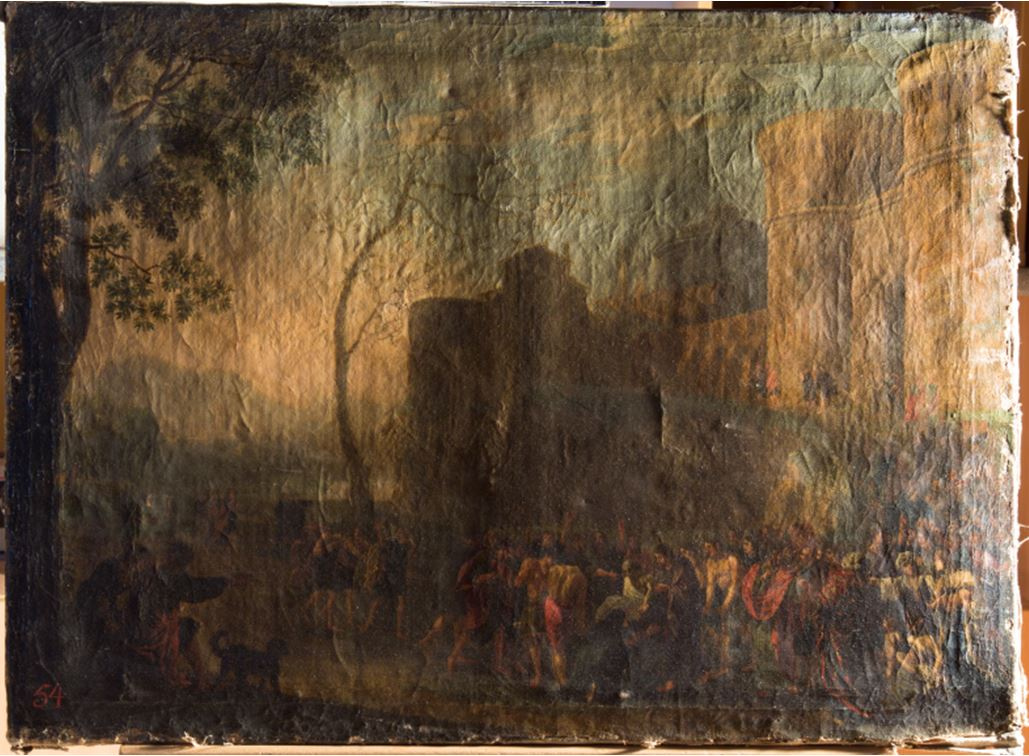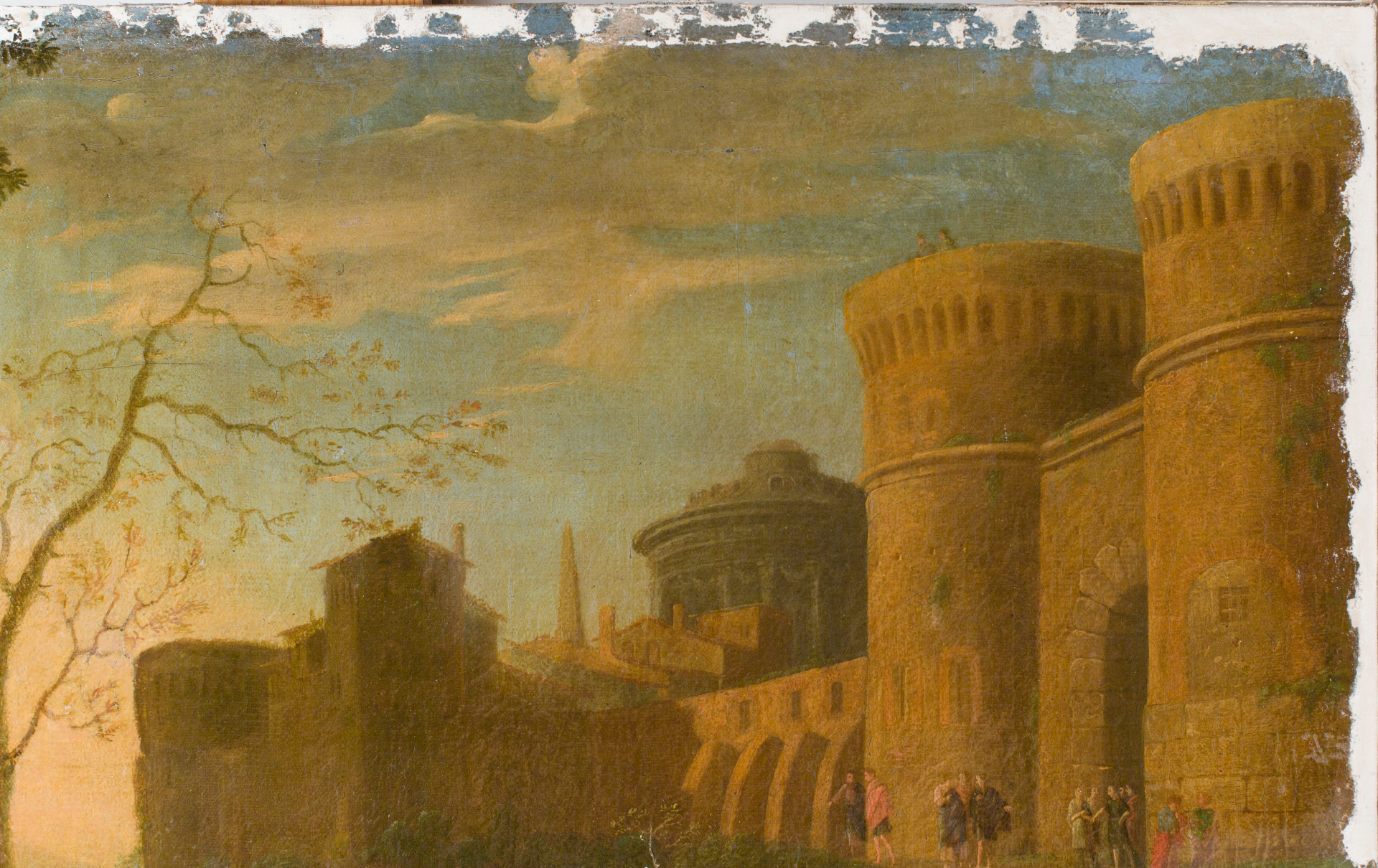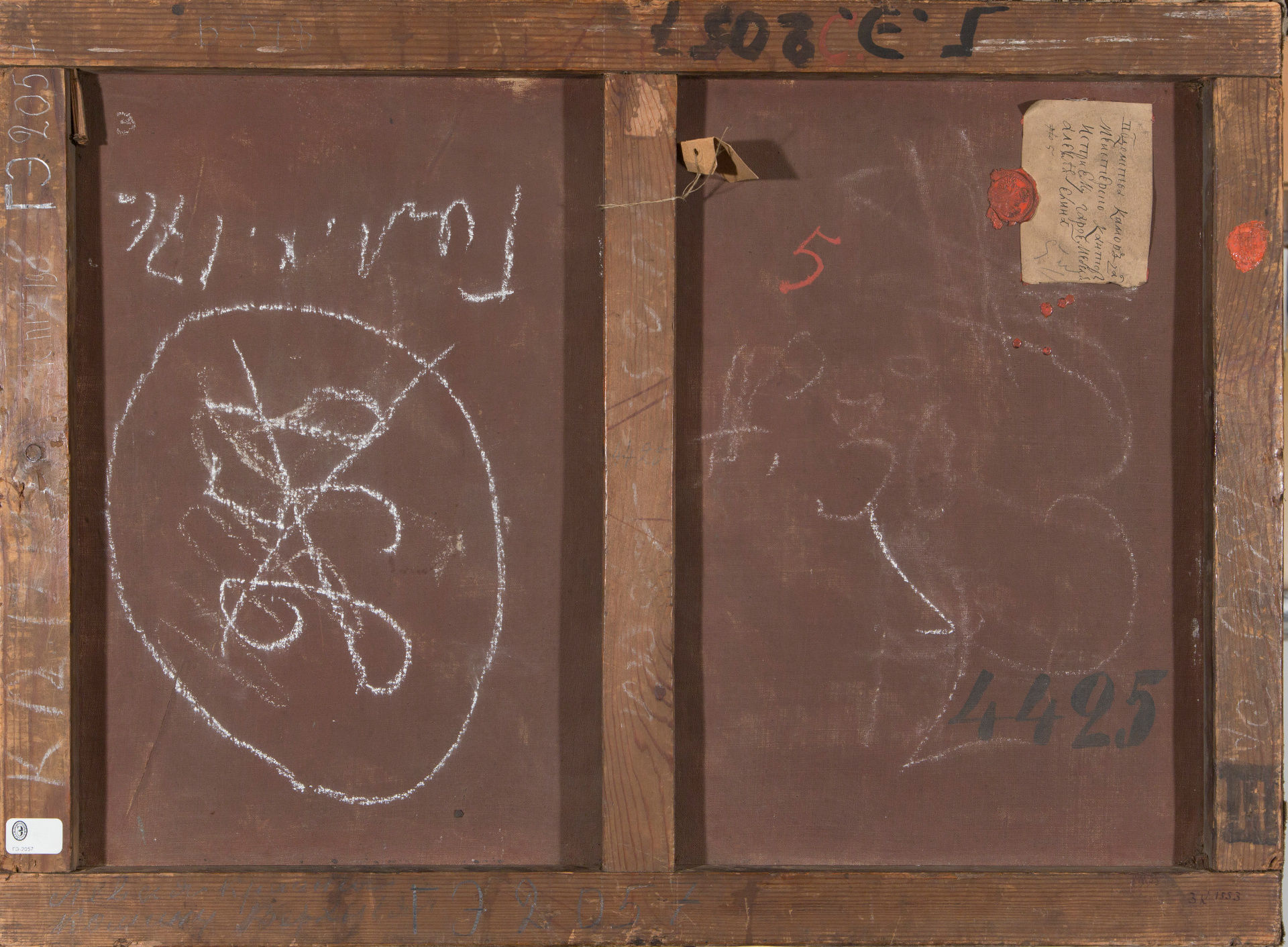Restoration of Herman van Swanevelt's Christ Resurrects a Young Man from Nain
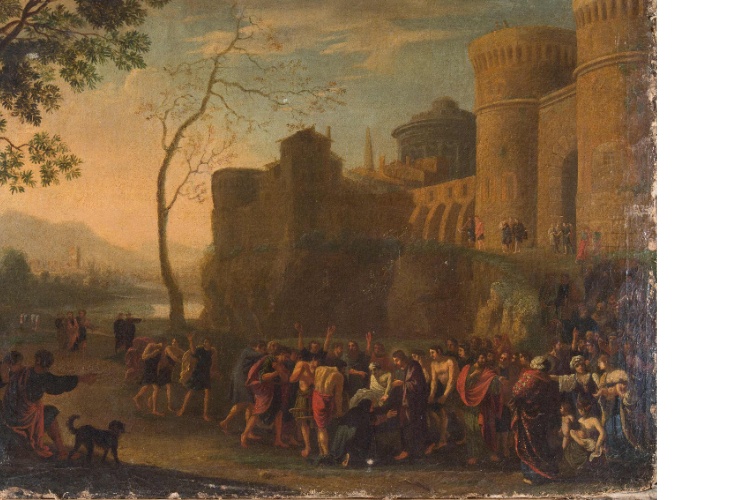 Herman van Swanevelt. Christ Resurrects a Young Man from Nain. Holland. 17th century. Oil on canvas. 72,5 x 53 cm
Herman van Swanevelt. Christ Resurrects a Young Man from Nain. Holland. 17th century. Oil on canvas. 72,5 x 53 cmHerman van Swanevelt (ca. 1603 – 1655), a Dutch artist and engraver, was born in Woerden. As a young man, he left his homeland and went first to Paris, and then to Rome to become a pupil and follower of the famous Claude Lorraine. In Rome he painted many landscapes, and introduced a new type of idyllic landscape with sunlit 'contrejours' reflecting the times of day. His paintings became very popular, and the Barberini family, Pope Urban VIII and the Vatican offered him commissions. Along with Lorrain and others, he also painted landscapes for Philip IV of Spain's new Buen Retiro Palace in Madrid.
In 1641 he returned to Paris, and became a member of the Académie Royale de Peinture et de Sculpture in 1651. His patrons in France were Cardinal Richelieu and King Louis XIV.
Svanevelt's artworks are an important stage in the development of the idyllic landscape style in the Dutch painting. In the Hermitage, Svanevelt's work is represented by three paintings.
State of preservation:
The painting was relined on a thin canvas. Over time due to the deterioration of duplicate glue, deformations of the base and hard ground craquelure were formed. The entire surface is covered with dirt. The author's painting is hidden under several uneven layers of yellowed varnishes and later restoration overpaintings. They cover almost the entire surface of the work and significantly change the original color of the picture.
Necessary restoration treatment includes:
- preparation of restoration documentation;
- photographing of the exhibit at all stages of the restoration process;
- removal of surface dirt;
- strengthening the paint layer over the entire surface;
- removal from the stretcher;
- removal of duplicate canvas;
- removal of duplicate glue residues from the back side of the original canvas;
- strengthening the paint layer over the entire surface once again;
- preparation of new canvas;
- relining of the original canvas on the new one;
- stretching on the exhibition stretcher;
- removal of reinforcing tissue;
- adding conservation ground to the losses of paint layer;
- varnish regeneration;
- thinning of old varnish and removal of late restoration overpaintings;
- second regeneration of varnish;
- coating the picture with new varnish;
- retouchings.
A working group of members of the State Hermitage staff has been formed for the restoration of the painting:
scholarly supervisor – Dr. Irina Sokolova, painting curator, chief researcher at the Department of Western European Fine Art;
coordinator – Alexandra Davydova, Head of the Hermitage Friends’ Club;
curator – Viktor Korobov, Head of the Laboratory for the Scientific Restoration of Easel Paintings;
artist-restorer – Sergey Bogdanov, Laboratory for the Scientific Restoration of Easel Paintings.
